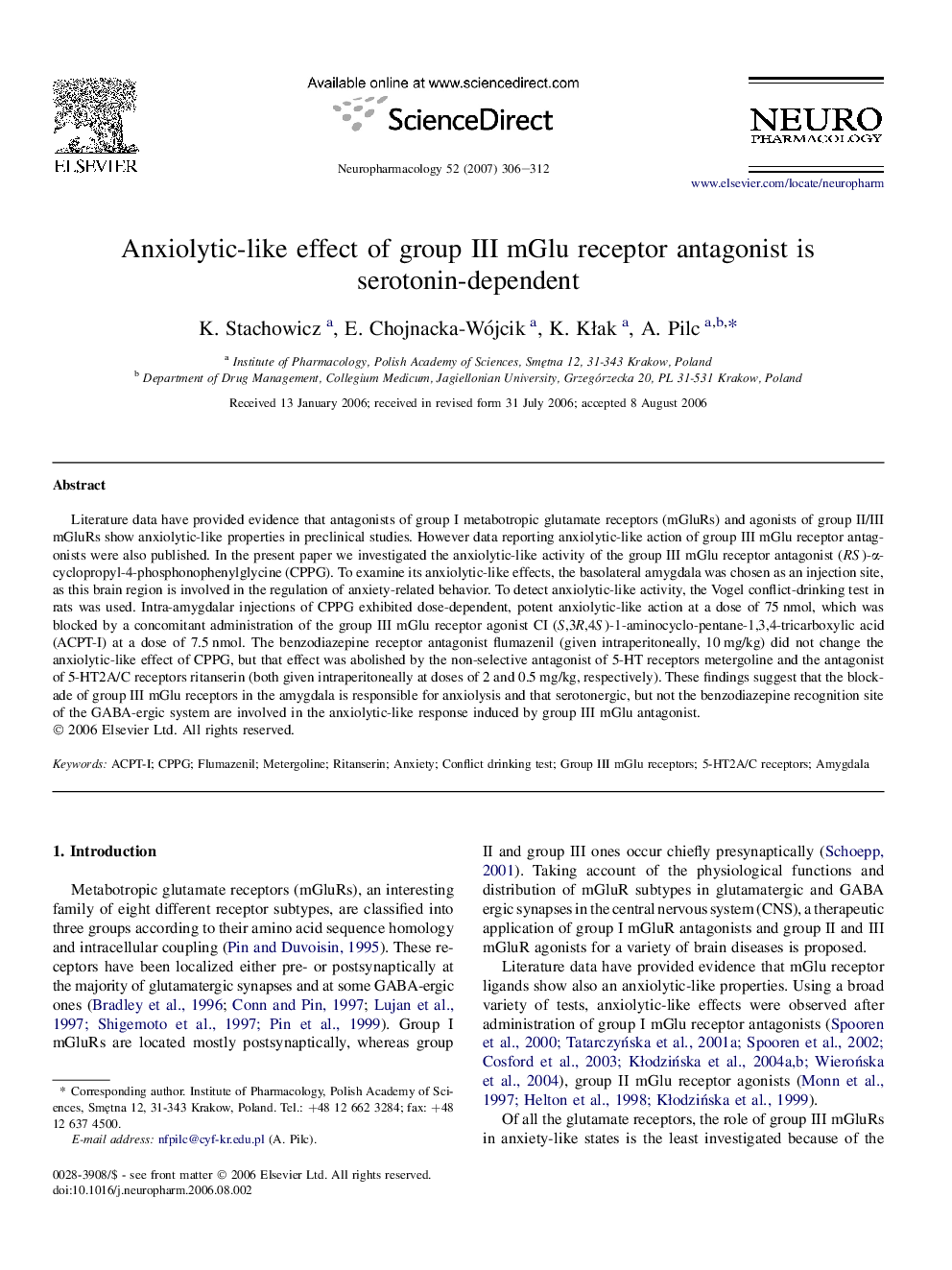| Article ID | Journal | Published Year | Pages | File Type |
|---|---|---|---|---|
| 2494795 | Neuropharmacology | 2007 | 7 Pages |
Literature data have provided evidence that antagonists of group I metabotropic glutamate receptors (mGluRs) and agonists of group II/III mGluRs show anxiolytic-like properties in preclinical studies. However data reporting anxiolytic-like action of group III mGlu receptor antagonists were also published. In the present paper we investigated the anxiolytic-like activity of the group III mGlu receptor antagonist (RS)-α-cyclopropyl-4-phosphonophenylglycine (CPPG). To examine its anxiolytic-like effects, the basolateral amygdala was chosen as an injection site, as this brain region is involved in the regulation of anxiety-related behavior. To detect anxiolytic-like activity, the Vogel conflict-drinking test in rats was used. Intra-amygdalar injections of CPPG exhibited dose-dependent, potent anxiolytic-like action at a dose of 75 nmol, which was blocked by a concomitant administration of the group III mGlu receptor agonist CI (S,3R,4S)-1-aminocyclo-pentane-1,3,4-tricarboxylic acid (ACPT-I) at a dose of 7.5 nmol. The benzodiazepine receptor antagonist flumazenil (given intraperitoneally, 10 mg/kg) did not change the anxiolytic-like effect of CPPG, but that effect was abolished by the non-selective antagonist of 5-HT receptors metergoline and the antagonist of 5-HT2A/C receptors ritanserin (both given intraperitoneally at doses of 2 and 0.5 mg/kg, respectively). These findings suggest that the blockade of group III mGlu receptors in the amygdala is responsible for anxiolysis and that serotonergic, but not the benzodiazepine recognition site of the GABA-ergic system are involved in the anxiolytic-like response induced by group III mGlu antagonist.
